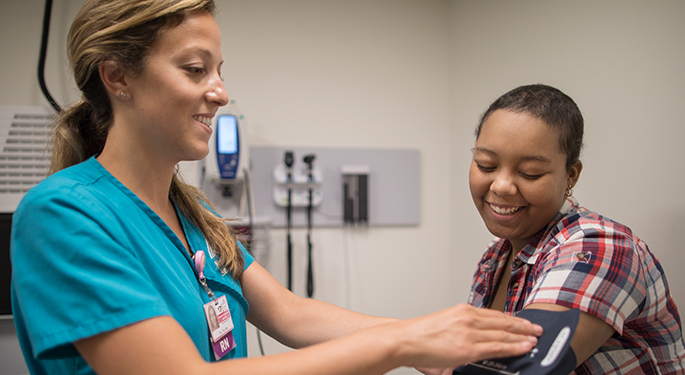Conditions & Treatments

We treat a wide variety of oncological conditions or types of cancer. Working as a collaborative team, we do our best to provide the most effective and efficient treatment possible, while maintaining quality of life for your child and family. Maintaining regular and ongoing communication with you and your child helps us meet our goals.
- Leukemia
- Acute lymphoblastic leukemia
- Acute myeloid leukemia
- Chronic myelocytic leukemia
- Lymphomas
- Hodgkin’s lymphoma
- Non-Hodgkin’s lymphoma
- Burkitt lymphoma/leukemia
- Diffuse large B-cell lymphoma
- Lymphoblastic lymphoma
- Anaplastic large cell lymphoma
- Rare lymphomas occurring in children
- Sarcomas
- Rhabdomyosarcoma
- Osteosarcoma
- Ewing’s sarcoma
- Soft tissue sarcomas
- Other solid tumors
- Hepatoblastoma
- Nephroblastoma or Wilms’ tumor
- Brain tumors
- Medulloblastomas
- Astrocytomas and other gliomas
- Primitive neuro-ectodermal tumors
- Ependymoma
- Germ cell tumors
- Rare brain tumors such as atypical rhadoid teratoid tumors
- Histiocytic disorders
- Langerhans cell histiocytosis
- Juvenile xanthogranuloma
- Erdheim-Chester disease
- Hemophagocytic lymphohistiocytosis
Treatments
Health care has made great progress in developing treatment programs for children and adolescents with cancer. Thanks to scientific research and the emphasis on multidisciplinary treatment, our success rates have increased dramatically. Currently, medical science can successfully treat 70 percent to 80 percent of children with cancer, if we are able to diagnose and treat them early.
Multidisciplinary treatment is important. Specialized nursing, pharmacy, rehabilitation, paramedical personnel, and access to increasingly complex equipment and facilities help us improve long-term survival and quality of life.